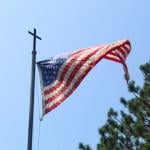Whenever you explore ancient sites in Turkey, you realize what a role earthquakes play in the way towns rise and fall, and move and develop. This was certainly part of the picture in what today is called Beyrakli, or old Smyrna, the one, according to the story that Alexander had the dream about and told the people to move. What there is to see at Beyrakli are several things, the remains of some columns, the remains of the ancient temple of Athena, the city walls, and the main city gates, a meeting house of small size for official meetings. What you notice right away is that the construction is done with stones that aren’t limestone (contrast the construction at the theater for example). First, the entrance to the city is much like many of those in the Holy Land, with a wall surrounding the entire city, and a casemate door combination providing limited entrance. Here is the entrance way
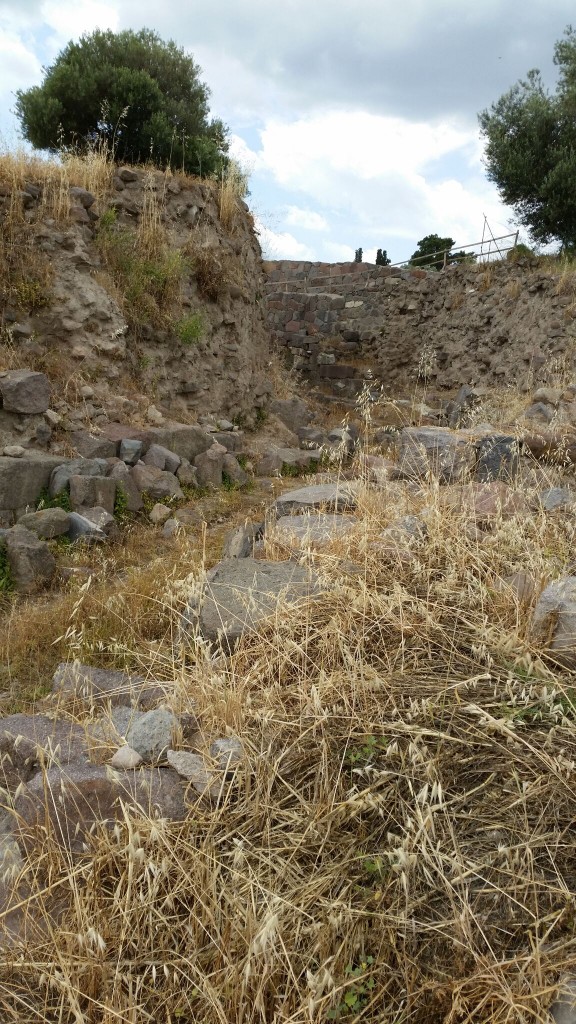
And here we look from the inside out the city gate…. Just outside the gate are the remains of an altar to the god Asclepius, the god of healing (on which see more in the post on Kos, forthcoming).
Just outside the gate are the remains of an altar to the god Asclepius, the god of healing (on which see more in the post on Kos, forthcoming).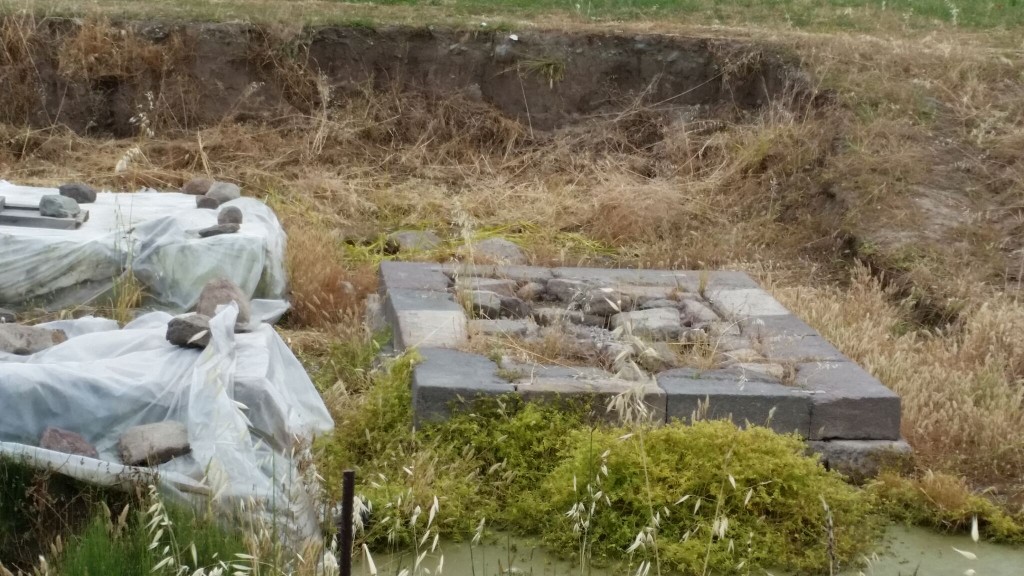
Here is a good picture that shows the stones used in the construction of the city walls, the houses etc.  Water was a constant issue for a walled city, but fortunately there was a spring bubbling up within the city….
Water was a constant issue for a walled city, but fortunately there was a spring bubbling up within the city…. And there were cisterns as well for storage of grain….
And there were cisterns as well for storage of grain…. Here’s the meeting house,
Here’s the meeting house,  And notice how similar the construction is to other houses,
And notice how similar the construction is to other houses, 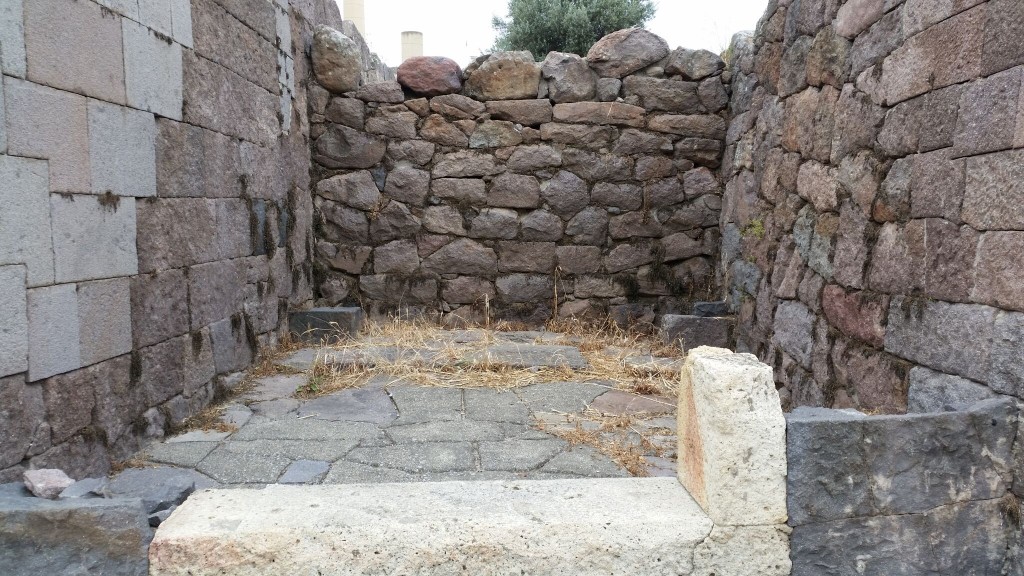
How were hinged doors made in antiquity— well largely stone was carved for the purpose with wooden frames to the door fitting into stone holes at the bottom and tops of the hinges….. Here is a stone found near the altar of Asclepius with clear marks of its being used to sacrifice animals on, using sharp blades to do the cutting….
Here is a stone found near the altar of Asclepius with clear marks of its being used to sacrifice animals on, using sharp blades to do the cutting…. Of course the focal point of the ancient city was the temple of Athena, who was by no means a purely local goddess worshipped at Athens. She was world famous for her wisdom (hence the owl statues her temple are often found with). The columns you see today are modern but they give a sense of the proportions of the ancient temple….
Of course the focal point of the ancient city was the temple of Athena, who was by no means a purely local goddess worshipped at Athens. She was world famous for her wisdom (hence the owl statues her temple are often found with). The columns you see today are modern but they give a sense of the proportions of the ancient temple….

 This temple would have dominated the landscape of old Smyrna. Here are some descriptions….
This temple would have dominated the landscape of old Smyrna. Here are some descriptions….
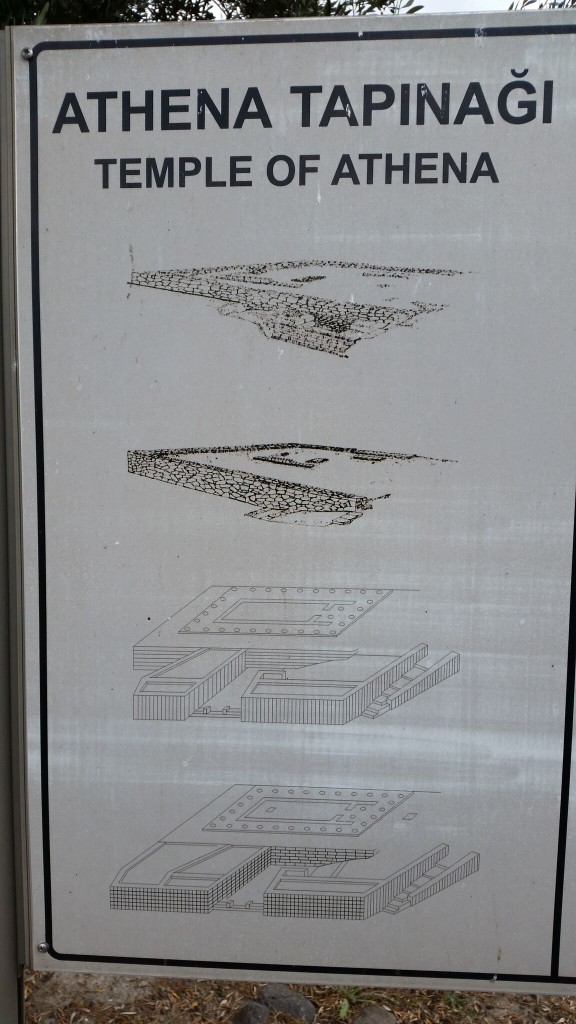 If you are asking yourself of what relevance is this to the study of the NT, ask no longer— again and again we learn how profoundly religious ancient Greco-Roman peoples were. The modern words secular or atheistic would describe almost none of them. And the essence of ancient religion was priests, temples, and sacrifices, which made Christianity look very odd, since it had none of these, unless one counts the concept of the priesthood of all believers, or the discussion of the once for all sacrifice of Christ, the heavenly high priest. Christianity would have come across more as some sort of philosophy of life or ethical system to most ancients. And an appeal to give up all systems of priests, temples, and sacrifices would have seemed not merely odd, but absurd if one wanted to tout a new ‘religio’. In short, Christianity in various ways would have been a hard sell.
If you are asking yourself of what relevance is this to the study of the NT, ask no longer— again and again we learn how profoundly religious ancient Greco-Roman peoples were. The modern words secular or atheistic would describe almost none of them. And the essence of ancient religion was priests, temples, and sacrifices, which made Christianity look very odd, since it had none of these, unless one counts the concept of the priesthood of all believers, or the discussion of the once for all sacrifice of Christ, the heavenly high priest. Christianity would have come across more as some sort of philosophy of life or ethical system to most ancients. And an appeal to give up all systems of priests, temples, and sacrifices would have seemed not merely odd, but absurd if one wanted to tout a new ‘religio’. In short, Christianity in various ways would have been a hard sell.








